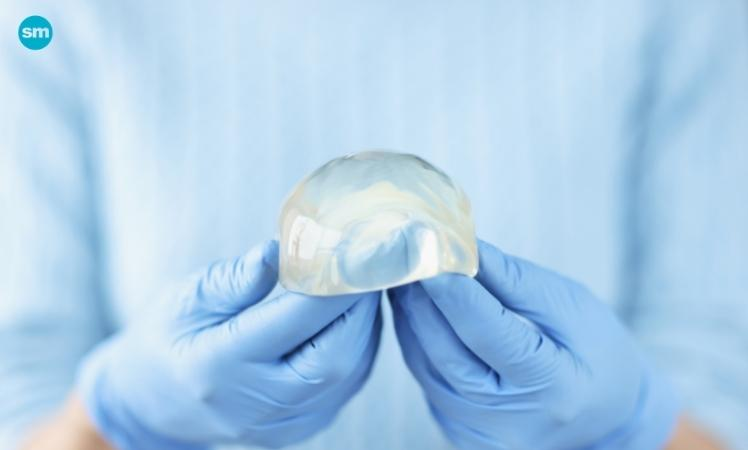You’ve probably heard of the term “breast lift” before, but do you know what it is?
A breast lift, also known as mastopexy, is a procedure that lifts and reshapes sagging breasts. It can also reduce the size of the areola (the darker area around a woman’s nipple), reposition the nipples to a higher position on the breast, and remove excess skin from under the armpits.
Breast lifting procedures can be performed at any age and in conjunction with other cosmetic surgeries like breast augmentation or reduction. The most common type of breast lift is an anchor incision technique that uses stitches to lift up skin from behind the breast and pull it into place over the chest wall.
While there are several types of mastopexy procedures available today, they’re all designed to address one thing: sagging breasts. Sagging occurs naturally over time as gravity pulls down on your body’s fat deposits. As these deposits shrink over time, they begin to sag toward your chest and make your breasts look droopy or uneven in shape.
How to Get a Breast Lift Covered by Insurance

Medicaid can pay for your breast reduction procedure in various instances.
However, an authorized health professional must deem your procedure medically necessary for Medicaid to approve it.
This means that your breast reduction has to be related to a medical condition. So if you intend to have a breast reduction for cosmetic purposes, Medicaid won’t pay, and you will settle the entire bill out-of-pocket.
Sometimes Medicaid may recommend that you try alternative treatments such as physical therapy and weight loss. But if you have records from a medical practitioner documenting neck and back pain over the years, then Medicaid will commence surgery preauthorization.
Medicaid, alongside other insurance programs, requires a 500-gram reduction of each breast.
But even if Medicaid intends to pay for your breast reduction surgery, it might be hard to find a surgeon to do the procedure due to Medicaid’s low reimbursement rates.
How to Get a Free Breast Reduction with Medicaid
If you’re getting a breast reduction, you’ll need to meet other conditions set by Medicaid. Your physician will need to verify that:
1. Non-surgical procedures haven’t worked for you.
2. Your symptoms have continued for at least six months.
3. The procedure is necessary to reduce your pain.
Your breast reduction procedure will need to be performed in a Medicaid-approved facility if you’re to receive full benefits.
You can ask the physician if they accept Medicaid before your first appointment. You can also search for Medicaid-approved physicians online.
Which Breast Reduction Procedures Does Medicaid Pay for?
Mastectomy for Male Gynecomastia
Mastectomy for gynecomastia is an operation to remove breast tissue in adult males. Male gynecomastia is caused by excessive growth of the male mammary glands.
Medicaid covers mastectomy for males if the following conditions are met:
1. If the adult recipient has a history of gynecomastia that continues for more than three months after pathological causes have been ruled out.

2. If the adolescent recipient has a history of gynecomastia that continues for more than six months after pathological causes have been ruled out.
3. If the excessive tissue is glandular and not fatty as established by a mammogram.
4. If the excess tissue growth is not caused by non-covered treatments, prescriptions, alcohol, or abuse of illegal drugs such as anabolic steroids, marijuana, etc.
Reduction Mammoplasty
Medicaid covers reduction mammoplasty in instances of genetic deficiency or loss of substantial female breast tissue of the contralateral breast due to trauma.
In addition, the procedure is covered if deemed medically necessary due to the high risk of cancer or cancer itself.
Prophylactic Mastectomy
Prophylactic mastectomy is the extraction of the mammary glands to prevent the growth of cancerous cells in individuals who are considered to be at a high risk of developing or redeveloping breast cancer.
Medicaid will pay for prophylactic mastectomy if the following conditions are met:
1. If the recipient has a personal history of breast cancer.
2. If a breast biopsy reveals, the recipient is at a high risk of contracting breast cancer.
Breast Reconstructive Surgery
Breast reconstructive surgery is done after a mastectomy to create balance with the contralateral breast.
Breast reconstructive surgery includes the surgical creation of a new breast mound and the reconstruction of the nipples.
Medicaid will pay for breast reconstructive surgery for the affected breast if deemed medically necessary by a physician.
The physician must provide documentation, including photos confirming severe disfigurement due to trauma, disease, or surgical complications.
Are There Any Out-Of-Pocket Costs for Breast Reduction?
Out-of-pocket costs concerning breast reduction can include your monthly Medicaid deductibles. These costs will be slightly more when specialists perform the procedure in an ambulatory surgery center.
Studies show that the average Medicaid beneficiary pays 279 USD in out-of-pocket costs for breast reduction surgery done in an ambulatory center compared to 259 USD in an outpatient facility.
However, this is an estimation for all kinds of plastic and reconstructive procedures and not breast reduction specifically.
What Can You Expect from Breast Reduction Surgery?
Before The Procedure
Preparing for breast reduction will most likely comprise several tests.
In addition, your physician will need to perform a routine breast assessment, and you could need an ultrasound or mammogram.
These tests will enable the physician to figure out if you should undergo breast reduction and if you’re healthy enough to undergo the procedure.
Your physician will also ask some questions about your personal medical history and that of your family as well. Again, you must be truthful when answering these questions.
Once the physician has cleared you for surgery, there are several other steps to take, including:
1. Stop taking prescription medication a few days before the surgery.
2. Quit smoking if you’re an avid smoker.
3. Limit your food and water intake on the day of surgery.
During The Breast Reduction Procedure
The skin, fat, and tissue in your breasts will be reassembled to achieve the desired outcome during surgery. The procedure could be either be inpatient or outpatient.
Most people undergo general anesthesia during breast reduction surgery.
After The Breast Reduction Procedure
After your breast reduction procedure:
1. Your breasts will be covered in bandages, and you might have drainage tubes attached to them. These tubes are meant to drain fluids and reduce any swelling.
2. You’ll have to retain the bandages and tubes for a couple of days. Once the bandages are removed, you will have to wear post-surgical bras for several weeks.
3. You can expect to be off work for a week or two so that you can rest and recover. Most people experience pain and fatigue after breast reduction surgery, making it hard to attend to other duties such as work.
4. Your physician will prescribe some drugs to help manage the pain. Your physician will also advise you on when you can get back to work and activities such as lifting.
Final Thought
To sum it all up, Medicaid will pay for your breast reduction procedure if the conditions illustrated above are met.
However, note that Medicaid doesn’t pay for cosmetic breast reduction procedures.
Also, you might incur some out-of-pocket costs depending on the Medicaid plan you have and where your breast reduction procedure is done.

